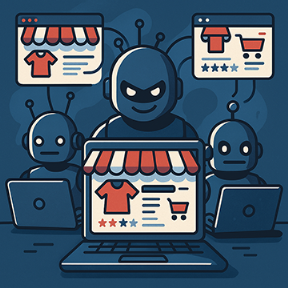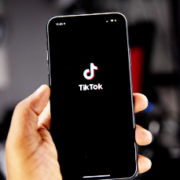By Blessed Hwaire, Industry Value Advisor: Consumer Products, Life Sciences & Retail at SAP Africa
The retail industry is one of the few sectors of the economy that emerged from the pandemic relatively unscathed.
Despite depressed consumer confidence levels, rising inflation and the increasing cost of living that could have had a severely negative effect on the sector, the latest BER Retail Survey found that retail confidence in South Africa actually improved in Q3.
The recently concluded Black Friday promotion period is another ray of optimism for the sector. According to NielsenIQ, Black Friday sales are expected to again surpass Christmas sales in South Africa this year.
RELATED: Nearly 65% of online retailers are removing products from advertising
The consumer research company found that the 2021 Black Friday week surpassed the biggest festive season sales week, with sales of fast-moving consumer goods baskets 23% higher than the average of all other month-end weeks in 2021.
Smart adoption of tech driving retail innovation
While bargain-hunting by cash-strapped consumers certainly contributed to the retail success of Black Friday and other promotional periods, there are larger forces at play. The retail sector’s resilience in the face of severe disruption can also be ascribed to its accelerated adoption of digital technologies that has unlocked new innovations.
For example, the Shoprite Group’s omni-channel retail offerings saw a rapid release of its on-demand delivery service Sixty60 across South Africa. Despite only launching in 2020, Sixty60 claimed a 75% market share in the final quarter of 2021. Its appeal to the always-on Gen Z consumers entering the customer pool has helped establish Sixty60 as the dominant force in on-demand grocery services, beating out more established competitors.
The fulfilment of online grocery purchases could see retailers introduce their own delivery services, as Sixty60 has done. But other retailers have pursued partnerships to avoid having to invest in new processes and infrastructure. Retailers can provide an excellent customer experience by establishing smart partnerships with expert fulfilment partners.
Africa’s largest e-commerce retailer Jumia recently announced a ground-breaking partnership with instant delivery service Zipline to employ the use of drones to enable quick on-demand deliveries.
German drone delivery service Wingcopter also recently announced plans to deploy 12 000 drones across 49 countries in Africa to aid delivery.
The blending of physical and online retail is also giving rise to new customer experiences. South African retailer Woolworths recently piloted a new service where customers can virtually try on clothes or makeup to see how they’d look before they make a purchase.
As adoption of online commerce accelerates over the coming years, customers can expect to see more innovation in how retailers leverage technology to deliver great customer experiences.
Beating retail adversity
It’s not all good news for retailers though. Most retailers face severe disruptions to their supply chains. A recent survey among US business leaders found that ongoing supply chain issues are causing widespread challenges, including a decrease in revenue (58%), inability to pay employees (50%), and the need for new financing measures such as business loans (54%).
Supply chain gridlocks stemming from lockdown pressures in China means retailers can’t always ensure products are on the shelf. This is giving rise to retailers increasing their stock thresholds just in case supply chain issues cause product shortages .
Many retailers are also pushing into new product and service categories. For example, Shoprite’s money market account, designed for cost-sensitive consumers and launched in 2020, has already claimed two million customers.
The appeal of the service is two-fold: there are almost no account fees aside from a R5 withdrawal fee, and customers can do their banking while in-store grocery shopping.
3 priorities for retail success in 2023
Retailers can continue their golden run in the year ahead by focusing on a small handful of key priorities.
Firstly, retailers can enhance their use of big data and analytics to guide the development of new services and innovation. Many retailers have a wealth of customer purchase data that can be mined for insight into personalised products, offers and experiences.
Whether purchasing online or in-store, customers seek personalised shopping experiences tailored to their needs and preferences. This can take the form of personalised marketing offers, discounts or rewards, and ensuring product suggestions and sales items are relevant to each customer.
Clothing retailers can take it a step further by tracking customer purchases to understand what styles and types of clothing a customer prefers, and offer similar products or even offer to tailor-make clothing items based on the customer’s preferences, body type, and more.
Secondly, retailers could develop tailored subscription services for certain types of customers.
For example, a pharmacy retailer could use loyalty data to better understand which customers are purchasing baby products. Because of the repeatable nature of purchases such as nappies and baby formula, a smart retailer could introduce a subscription service to qualifying customers that ensures a regular delivery of key baby items.
This would ensure repeat business for the retailer while giving new parents a positive customer experience by removing the need to constantly go to the shop to stock up on essentials.
Finally, retailers should enhance their human capital management capabilities. With customer expectations for great personalised service at an all-time high, retailers that want to win the hearts and minds of customers need to ensure in-store staff can deliver a consistently great customer experience.
It’s no longer enough that in-store staff simply stock shelves and process purchases. Smart retailers will invest in attracting and retaining top talent to ensure in-store staff can provide helpful information, guidance and support to customers during their purchases.
Retailers may choose to partner with technology providers that have the experience and global insight to guide how technology is deployed to assist with the above three priorities. For retailers that get it right, there is practically no limit to their success over the coming years.































